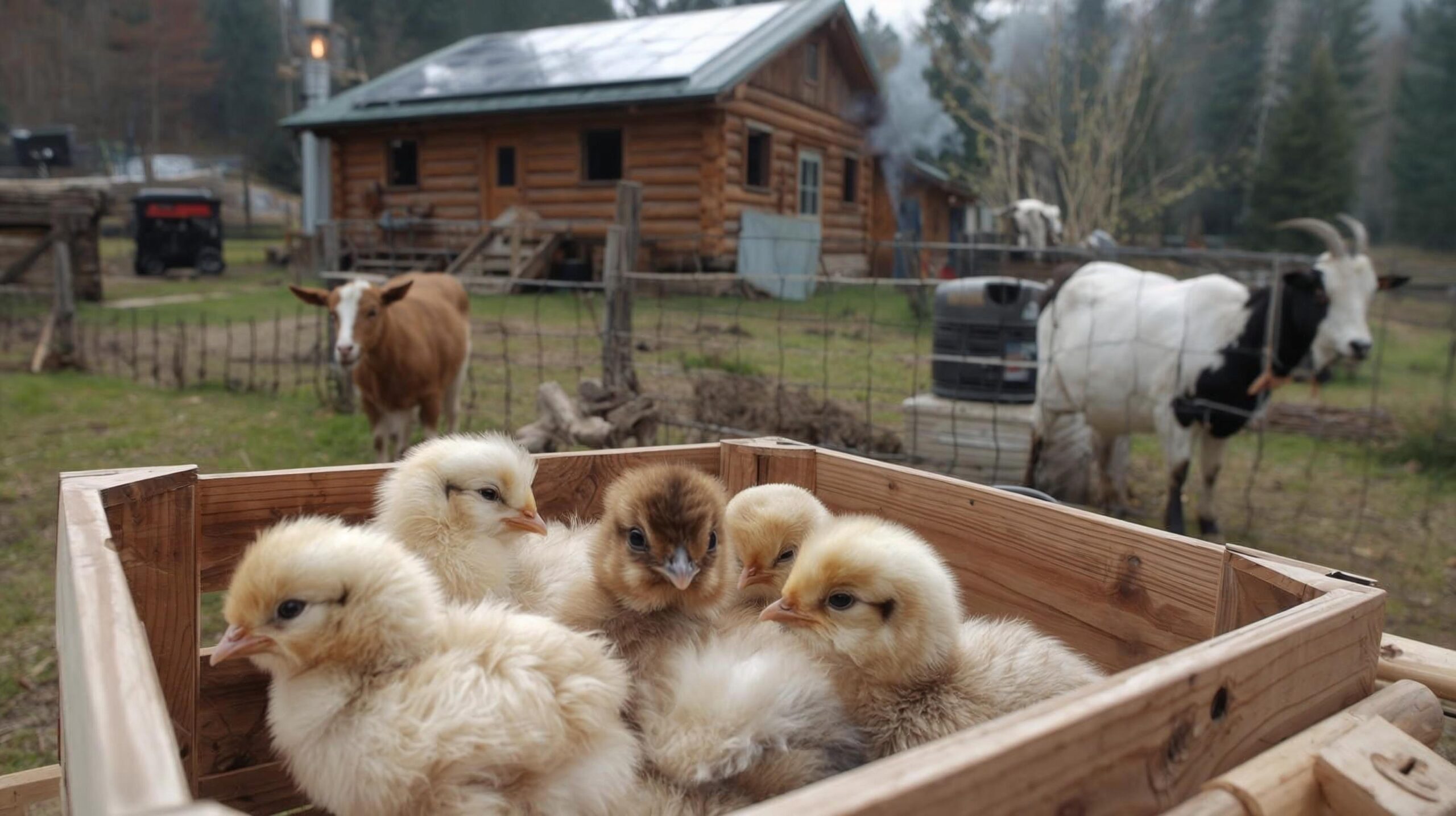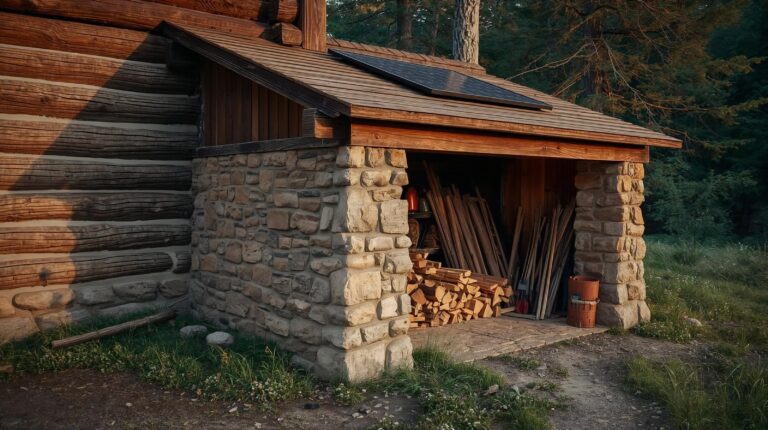How to Start Raising Backyard Chickens: A Beginner’s Guide
Raising backyard chickens is one of the most rewarding steps toward self-sufficiency. Fresh eggs daily, natural pest control, and rich compost for your garden—all from a small flock that costs less to maintain than most people spend on coffee.
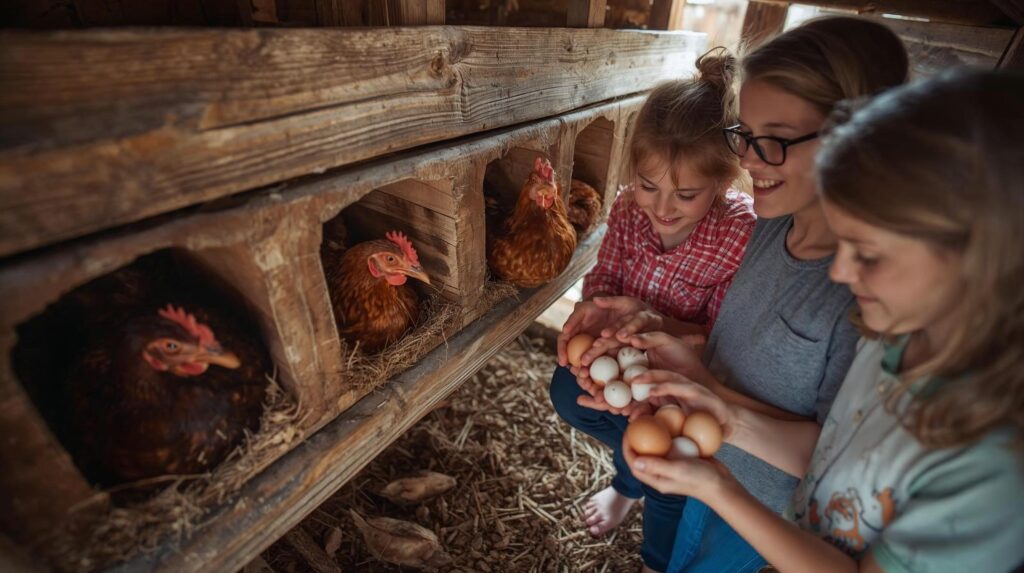
Whether you’re homesteading on acreage or working with a suburban backyard, chickens adapt to various climates and spaces. The key is understanding your local regulations, choosing the right breeds for your region, and setting up proper housing before you bring birds home.
This guide covers everything you need to start your first flock: checking local laws, selecting cold-hardy or heat-tolerant breeds, building or buying appropriate coops, and avoiding the most common beginner mistakes. By the end, you’ll know exactly how to get started—and which supplies you actually need versus what’s just marketing hype.
Let’s get your flock started.
Check Local Laws Before You Buy Chickens
Before you fall in love with adorable chicks at the feed store, verify you’re legally allowed to keep them.
City limits: Many cities prohibit chickens entirely or restrict them to properties over a certain size. Regina, Saskatchewan, for example, doesn’t allow chickens within city limits. Other cities permit hens but ban roosters due to noise concerns.
HOA restrictions: If you live in a neighborhood with a Homeowners Association, check the covenants. HOAs often restrict livestock even if city ordinances allow it—and they have legal power to enforce removal.
Property zoning: Unincorporated areas and agricultural zones typically have fewer restrictions, but check with your county zoning office to confirm livestock rules.
Number limits: Some jurisdictions cap flock size (common limits: 4-6 hens on residential lots under one acre).
How to check:
- Call your city’s zoning department
- Search “[your city] backyard chicken ordinance”
- Read your HOA covenants thoroughly
- Ask neighbors about their experiences
Starting with legal clarity saves you from having to rehome birds you’ve bonded with—or facing fines.
Select Breeds That Thrive in Your Climate
Not all chicken breeds handle extreme temperatures equally. Matching breeds to your climate prevents stress, illness, and reduced egg production.
Cold-hardy breeds (Canada, Northern US, winter climates):
- Buff Orpingtons – Fluffy feathers, excellent cold tolerance, friendly temperament
- Plymouth Rocks – Dual-purpose (eggs + meat), winter-hardy, 200+ eggs/year
- Wyandottes – Rose combs resist frostbite, calm demeanor, beautiful plumage
- Brahmas – Massive birds, feathered feet, thrives in snow
Heat-tolerant breeds (Southern US, hot summers):
- Leghorns – White feathers reflect heat, prolific layers, active foragers
- Easter Eggers – Adaptable, heat-tolerant, lay colored eggs
- Andalusians – Mediterranean breed, excellent heat tolerance
All-climate breeds (moderate temps or mixed seasons):
- Rhode Island Reds – America’s most popular breed, adaptable, 250+ eggs/year
- Australorps – Record egg layers, handle temperature swings well
- Sussex – Hardy, friendly, good in varied climates
Key factors beyond climate:
- Egg production: Leghorns and Rhode Island Reds are top layers
- Temperament: Orpingtons and Cochins are gentle (good with kids)
- Dual-purpose: Plymouth Rocks provide both eggs and meat
- Space needs: Bantams require less room; standard breeds need 3-4 sq ft per bird in the coop
Start with 3-6 hens for a family of four. You’ll get 12-25 eggs per week depending on breed and season.
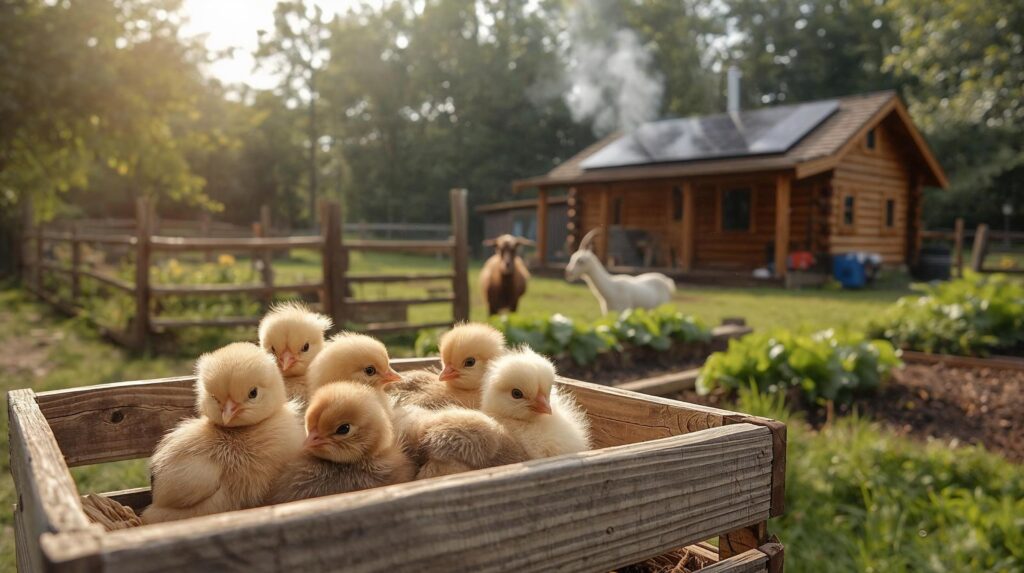
Set Up Proper Housing Before Birds Arrive
Your coop protects chickens from predators, weather, and provides nesting space. Build or buy it before you bring chicks home.
Space requirements:
- Inside coop: 3-4 square feet per bird
- Outdoor run: 8-10 square feet per bird
- Example: 4 hens need 12-16 sq ft coop + 32-40 sq ft run
Essential coop features:
- Ventilation: Prevents moisture buildup and respiratory issues
- Roosting bars: 8-12 inches per bird, 2-4 feet off ground
- Nesting boxes: One box per 3-4 hens, filled with straw or shavings
- Predator-proof: Hardware cloth (not chicken wire), secure latches, buried wire skirt
Climate modifications:
- Cold climates: Insulated walls, deep litter method, heated waterers. Portable generators provide backup power for heated waterers during extreme cold snaps. Check our best portable generators guide.
- Hot climates: Extra ventilation, shade cloth, misters for extreme heat
- Wet climates: Elevated floors, covered run, excellent drainage
Coop options:
- DIY build: $200-500 in materials, customizable to your needs
- Pre-fab coops: $300-1,500, easier setup but often lower quality
- Converted sheds: Budget-friendly if you have existing structure
Don’t skip the run: Even free-range flocks need secure outdoor space for bad weather or predator threats. Off-grid chicken coops benefit from solar-powered automatic doors and lighting. See our solar panel kit reviews for powering coop accessories.
Basic Supplies You Actually Need
Skip the marketing gimmicks. Here’s what first-time chicken keepers truly need:
Before chicks arrive:
- Brooder setup (cardboard box, plastic tote, or brooder kit)
- Heat lamp with red bulb (prevents pecking) + thermometer
- Chick starter feed (20-22% protein, non-medicated unless needed)
- Waterer (chick-sized with marbles to prevent drowning)
- Pine shavings for bedding (never cedar—toxic to chicks)
For adult chickens:
- Layer feed (16-18% protein) or all-flock feed if you have mixed ages
- Grit (helps digestion since chickens lack teeth)
- Oyster shell (free-choice calcium for strong eggshells)
- Feeders and waterers (one of each per 4-6 birds)
- Bedding material (pine shavings, straw, or sand)
- Dust bath area (sand, wood ash, diatomaceous earth mix)
Nice to have but not essential:
- Automatic coop door (convenience for early risers)
- Chicken swing (entertainment—yes, they use them!)
- Nesting box curtains (privacy encourages laying)
Budget estimate:
- Startup costs: $500-800 (coop, birds, initial supplies)
- Monthly costs: $15-30 per hen annually (feed, bedding, treats)
Most expenses are upfront. After setup, chickens are remarkably affordable livestock.
Avoid These Five Beginner Mistakes
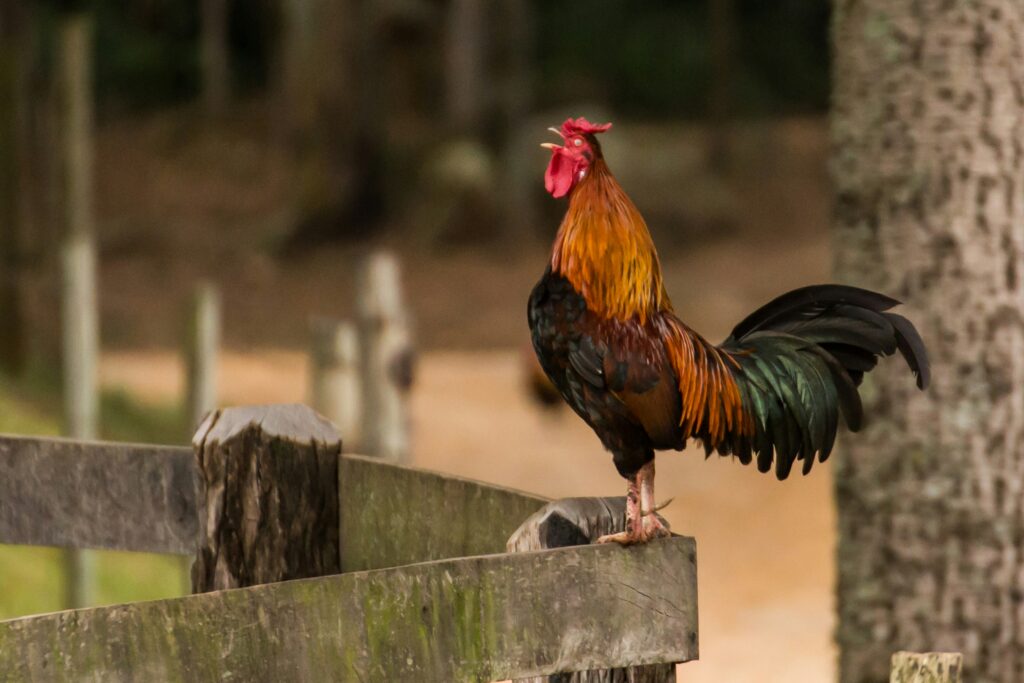
1. Getting roosters accidentally
Chick sexing is 90-95% accurate. Unless you want 5 AM crowing and potential neighbor complaints, buy sexed pullets (young females) or point-of-lay hens.
2. Underestimating predators
Raccoons, foxes, hawks, dogs, and even rats kill chickens. Hardware cloth (not chicken wire) and secure latches are non-negotiable. Bury wire 12 inches deep—predators dig.
3. Skimping on coop ventilation
Poor airflow causes respiratory disease and frostbite (from ammonia and moisture). Ventilation near the roofline prevents drafts while removing humidity.
4. Feeding only scratch grains
Scratch is candy, not nutrition. Layer feed provides balanced protein, vitamins, and minerals. Treats should be less than 10% of their diet.
5. Not planning for vacation care
Chickens need daily attention. Line up a chicken-sitter before you travel—or invest in automatic feeders and waterers for short trips.
Learn from others’ mistakes instead of repeating them. The chicken-keeping community is remarkably helpful—join local Facebook groups or forums for real-time advice.
Start Small, Grow Confident
Backyard chickens aren’t as complicated as the endless products and opinions suggest. You need secure housing, appropriate feed, fresh water, and protection from predators. Everything else develops naturally as you learn your flock’s rhythms.
Start with 3-4 hens of a cold-hardy or heat-tolerant breed suited to your climate. Give them 3-4 square feet each inside the coop, 8-10 square feet in the run, and they’ll reward you with fresh eggs, garden fertility, and surprisingly entertaining companionship.
For more guidance on off-grid preparation, explore our guides on starting a productive garden and off-grid solar power.

